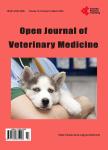The Effects of Low Intensity Endurance Activity on Various Physiological Parameters and Exercise Induced Oxidative Stress in Dogs
The Effects of Low Intensity Endurance Activity on Various Physiological Parameters and Exercise Induced Oxidative Stress in Dogs作者机构:Annamaet Petfood Company Sellersville PA USA Department of Clinical Sciences Cornell University Ithaca NY USA Essex Animal Hospital Essex Canada Linus Pauling Institute Oregon State University Corvallis OR USA
出 版 物:《Open Journal of Veterinary Medicine》 (兽医学(英文))
年 卷 期:2014年第4卷第7期
页 面:134-144页
学科分类:1002[医学-临床医学] 100214[医学-肿瘤学] 10[医学]
主 题:Exercise Cortisol Isoprostane Dehydration Uric Acid
摘 要:The study of canine athlete physiology has focused on endurance sled dog racing and high intensity short duration Greyhound racing, yet the number of dogs competing in low intensity endurance activities is rising due to the increased numbers of hunting and companion dog activities. There is little information on the physiological effect of longer duration low intensity endurance activities. We set out to evaluate the serum biochemistry, oxidative stress, and cortisol response before and after two consecutive days of exercise in ten healthy unconditioned male dogs. Exercise sessions consisted of 120 minutes on an exercise wheel at 11 km/hour on 2 consecutive days. Blood was collected at four time points: 24 hours pre-exercise (sample 1, Day 0, resting);2 min post-exercise on days 1 and 2, (samples 2 and 3, respectively);and 20 hours post-exercise, collected on day 3(sample 4). Hematocrit, blood gases, serum chemistry, uric acid, cortisol, and F2-isoprostanes were determined. Serum biochemistry and hematocrit suggested hemoconcentration, mild muscle damage and respiratory alkalosis during exercise, which was expected in the unconditioned canine athlete. In addition, plasma indices of oxidative damage (F2-isoprostanes) increased, as did plasma uric acid (an endogenous antioxidant). Importantly, similar to human studies, plasma F2-isoprostanes decreased 24 hours after exercise suggesting a protective effect of exercise. Serum cortisol concentrations were also markedly elevated at the end of exercise on both days suggesting that timing of sampling may play a role in interpreting cortisol results when looking at previous field studies.



